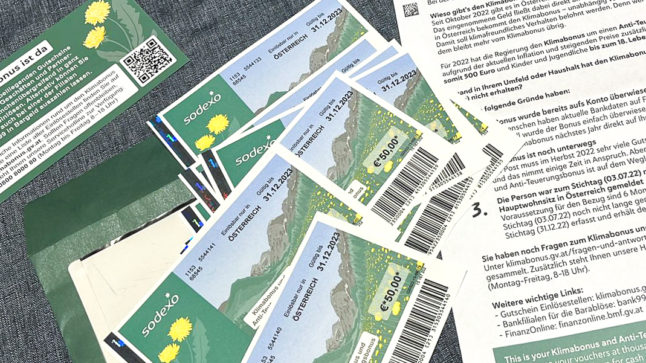Austria has completed the “in-year payment” wave of the Klimabonus 2023, with the majority of those eligible receiving their payouts of €55 to €220 back in the autumn of last year. However, some are still waiting for their payment despite being eligible.
This is because, in a few cases, the government cannot determine eligibility until the end of the year. This is why a second payout of the Klimabonus 2023 is scheduled for spring 2024. Anyone who has their primary residence in Austria for at least six months in the year of entitlement receives the payment, which was created to offset the costs of a new CO2 green tax and varies depending on where a person lives.
READ ALSO: Will Austria increase the Klimabonus payment amount in 2024?
If you have lived in Austria for at least six months in 2023 and still haven’t been paid your Klimabonus 2023, here are the possible reasons why:
- You have moved to a different address within Austria. The government would then have to wait until the end of the year to establish in which regional category you lived the longest.
- You moved to Austria in the first six months of the year. In this case, you have not yet satisfied the basic condition for receipt of the Klimabonus by the time of the first entitlement assessment date in July 2023. This is also the case for children born in the first six months of the year – they were not considered “residents” by the time of the cut-off date in July 2023 and will only receive it after a second assessment is made at the end of the year.
- The recipient of Family Allowance (Familienbeihilfe) has changed. This is relevant because the Klimabonus for a child is paid out to the person who received the Family Allowance for the child for at least six months in 2023. If the Familienbeihilfe payment started only in 2023, then the Klimabonus will be sent only in spring 2023 after the recipient is confirmed.
- In the first six months of the year, you were detained by order of a court or the authorities or were serving a sentence involving the deprivation of liberty. According to the federal government, people who are arrested or serving such a sentence for more than 183 days do not receive a Klimabonus.
READ ALSO: Klimabonus 2023: Everything we know about Austria’s subsidy payment
If you fall into any of the categories above, you will still receive your Klimabonus 23 payment by spring 2024. By autumn 2024, unless any of those criteria again happen to you, you will also receive a Klimabonus 24 payment.
My case is none of the above, and I still haven’t received the payment. What should I do?
If you are sure you are entitled to it (main residence in Austria for at least six months in 2023 and a legal resident status in the country), you can reach the call centre on 0800 8000 80, Monday through Friday from 8 am to 6 pm.
My Klimabonus was sent out, but I missed the deadline to pick up my letter from the post office. What should I do?
In some cases, the Klimabonus was sent out to people through a Sodexo voucher that was mailed in secure post. If you were not at home to sign for the delivery, you’d have to take your ID to the post office and pick it up there within the deadline.
If you missed the deadline, it’s still possible to collect your Klimabonus. The government has released a contact form for those cases. If you want to receive your next payment straight to your bank account HERE is how you can do it.



 Please whitelist us to continue reading.
Please whitelist us to continue reading.
Member comments